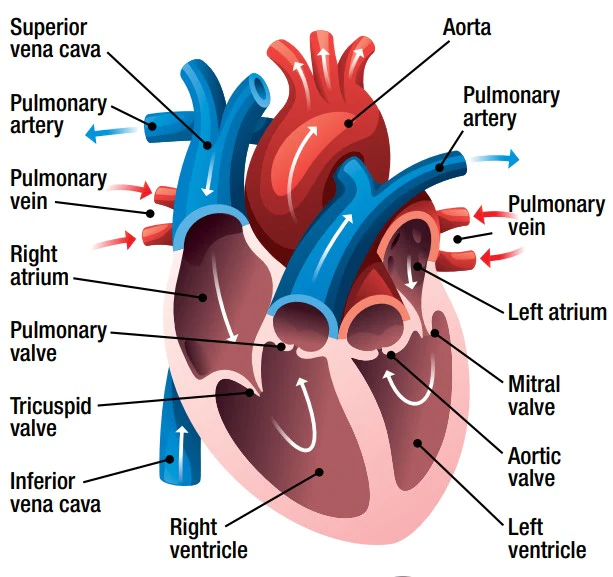AQA GCSE Biology Trilogy: The Blood Vessels
The Blood Vessels:
Arteries:
- Carry blood from the heart to the organs
- Carry bright-red oxygenated blood
- Can stretch
- Have thick walls
- Containing muscle and elastic fibres
- Have small lumens
- The central hole which allows blood to flow
Veins:
- Carry blood from the organs to the heart
- Carry purple-red, low-oxygen blood
- Have thin walls
- Have valves
- To make sure blood can only flow in one direction
- Blood is squeezed by the skeletal muscles
- Have large lumens
Capillaries:
- Form a huge network of tiny vessels that link the arteries and the veins
- Have narrow, thin walls
- Suited for the diffusion of oxygen and glucose
- Carbon dioxide can easily pass through
Double Circulation:
Pulmonary Circulation System:
- Connects the heart and the lungs
- Allows for gas exchange to take place
Systemic Circulation System:
- Connects the heart and the cells of the body
- Allows cells to be provided with oxygen
- Takes carbon dioxide from the cells
Key Facts:
- Vital in warm-blooded animals
- Efficient
- Ensures all cells are provided with oxygenated blood
The Heart:
